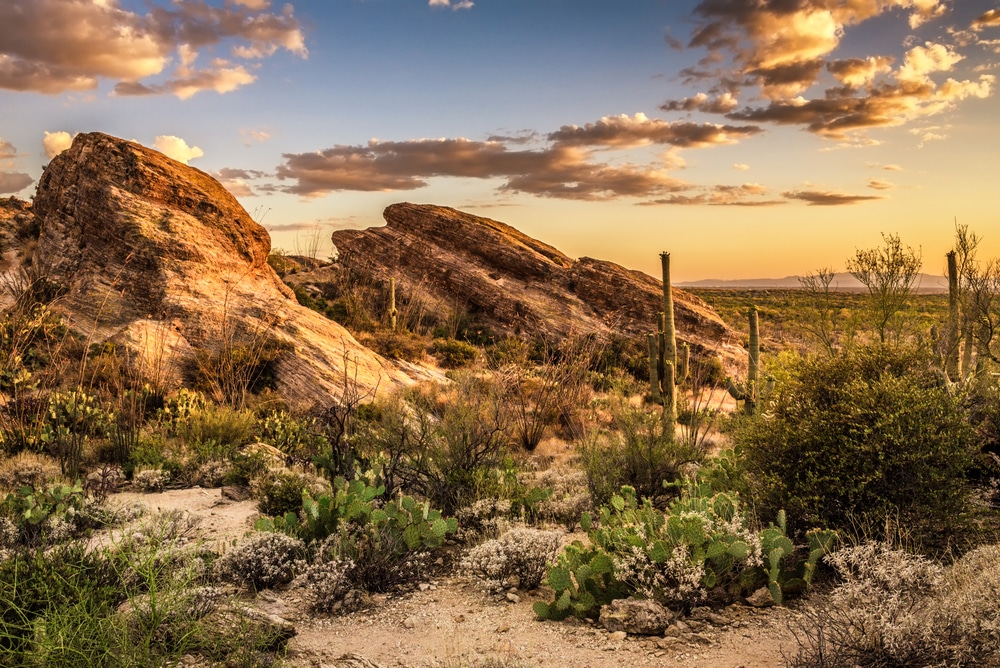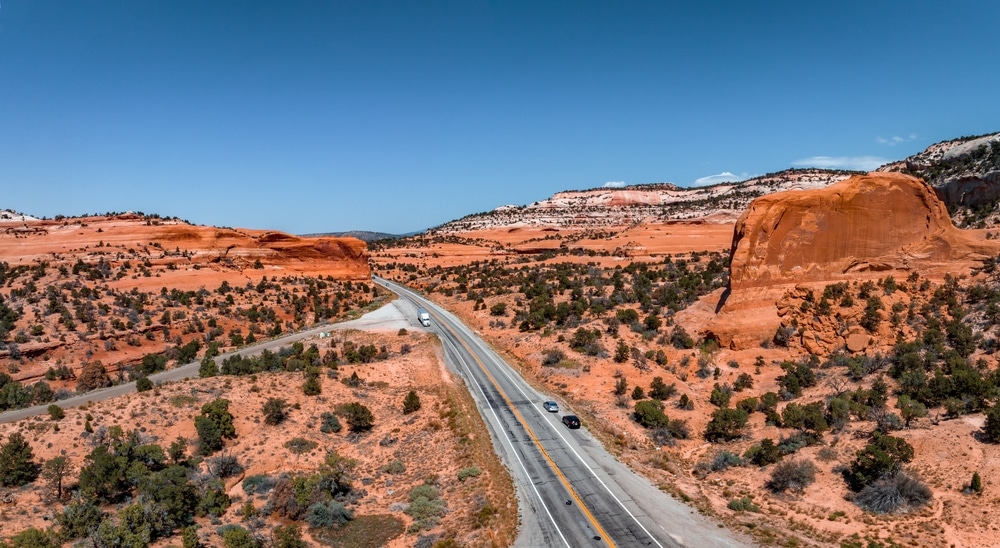Southern Arizona captivates visitors with its striking landscapes, rich cultural tapestry, and year-round outdoor adventures. This distinct region stretches from the saguaro-studded Sonoran Desert to the unexpected “sky island” mountain ranges that rise dramatically from the desert floor. Defined by the Mexican border to the south and the Gila River watershed to the north, this land of extremes showcases nature’s remarkable adaptability.
The region experiences the classic desert climate with scorching summers and mild winters, yet the higher elevations offer surprising respite with cooler temperatures and even occasional snow. This climatic diversity has shaped human experience here for millennia, from the ancient Hohokam and Mogollon peoples who developed sophisticated irrigation systems to the O’odham and Apache tribes who mastered desert living. Spanish explorers arrived in the 16th century, followed by Mexican settlers and American pioneers, each adding layers to the region’s complex identity.


Southern Arizona’s economic evolution tells a fascinating story of adaptation and innovation. Once dominated by copper mining, cattle ranching, and cotton farming, the region now thrives on a diverse economy encompassing tourism, aerospace, military operations, high-tech industries, and sustainable agriculture. Throughout this transition, the cultural landscape has remained distinctively vibrant – a blend of Native American traditions, Hispanic heritage, pioneer spirit, and contemporary creative expression.
Today, Southern Arizona stands as a testament to human ingenuity and cultural resilience in one of America’s most challenging yet beautiful environments. From the metropolitan hub of Tucson to the historic streets of Tombstone, each community contributes a unique chapter to the region’s remarkable story.
Southern Arizona’s landscape defies desert stereotypes with its astonishing diversity. The iconic Sonoran Desert – the only place on earth where the majestic saguaro cactus grows wild – serves as the backdrop for an incredible range of ecosystems. The region’s “sky islands” create a natural phenomenon where mountain ranges rise like archipelagos from the desert floor, each supporting distinct biological communities that change dramatically with elevation.
The Santa Catalina, Huachuca, Chiricahua, and Santa Rita mountains showcase this remarkable biodiversity, where desert scrub gives way to oak woodlands, pine forests, and even alpine meadows within a short drive. These isolated mountain ecosystems harbor rare species like the elegant trogon and jaguar, making Southern Arizona a premier destination for wildlife enthusiasts and birdwatchers.
Protected natural areas abound, including Saguaro National Park, Coronado National Forest, and Chiricahua National Monument with its breathtaking rock formations. The San Pedro River, one of the Southwest’s last free-flowing rivers, creates a verdant ribbon through the desert landscape, supporting crucial migratory bird corridors. Meanwhile, human engineering complements these natural wonders through thoughtful water management projects that have created recreational oases like Patagonia Lake.
Walk through Southern Arizona and you’re tracing paths established thousands of years ago. Ancient trade routes used by Indigenous peoples evolved into Spanish colonial trails, which later became wagon roads, railroads, and eventually today’s highways. This layered history remains visible across the landscape, from prehistoric petroglyphs to Spanish missions, territorial-era architecture, and mid-century modern designs.
The region played a pivotal role in America’s westward expansion, with places like Tombstone epitomizing the Wild West era. Military outposts like Fort Huachuca helped secure the frontier while becoming important chapters in African American military history through the Buffalo Soldiers. Meanwhile, the 1854 Gadsden Purchase redrew international boundaries, creating the distinctive cultural blend that defines the borderlands.
Hispanic influence remains profound in architecture, cuisine, and traditions, while Native American communities maintain vibrant cultural practices. The annual La Fiesta de los Vaqueros celebrates the region’s ranching heritage, while events like Tucson Meet Yourself showcase its multicultural fabric. Historic preservation efforts have successfully protected numerous sites, turning Southern Arizona into a living museum where visitors can experience the authentic American Southwest.
Southern Arizona rewards outdoor enthusiasts year-round with exceptional recreational opportunities. Winter and spring bring perfect temperatures for desert exploration, with hundreds of miles of hiking and mountain biking trails threading through saguaro forests and mountain canyons. Rock climbers challenge themselves on world-class routes in places like Cochise Stronghold, while birders flock to hotspots along the San Pedro River.
Summer monsoons transform the landscape, bringing dramatic thunderstorms and desert blooms. Despite the heat, early morning hikes and higher elevation adventures remain viable options. Fall delivers ideal conditions for outdoor pursuits of all kinds, from challenging backcountry expeditions to leisurely scenic drives through mountain passes.
Off-road enthusiasts find paradise in designated areas like the Buenos Aires National Wildlife Refuge, while golfers enjoy championship courses with dramatic desert backdrops. Astronomical tourism flourishes under some of North America’s darkest skies, with observatories and stargazing events showcasing the celestial wonders visible in this clear desert air.
Every season in Southern Arizona offers distinctive outdoor experiences, from witnessing dramatic monsoon storms and desert wildflower blooms to participating in guided adventures with local experts who reveal the hidden wonders of this extraordinary landscape.
Southern Arizona’s agricultural heritage demonstrates remarkable human adaptability. Building on ancient Indigenous irrigation techniques, modern farmers have developed innovative approaches to desert cultivation. The region now produces world-class wines from vineyards in Sonoita and Willcox, where high elevation and dramatic temperature shifts create ideal growing conditions for distinctive varietals.
Sustainable agriculture thrives in this challenging environment, with heritage crops like white Sonora wheat experiencing a renaissance. The ancient mission gardens of Tucson preserve heirloom plants introduced by Spanish missionaries, while innovative water harvesting techniques allow for productive desert gardening. This agricultural innovation earned Tucson recognition as the first UNESCO City of Gastronomy in the United States, celebrating its 4,000-year food heritage.
Renewable energy development flourishes across the region, with solar farms harnessing the abundant sunshine. Communities have embraced sustainable building practices that work with the desert environment rather than against it. The University of Arizona’s environmental research centers pioneer desert adaptation strategies, developing technologies and practices that influence arid regions worldwide.
Southern Arizona’s communities each tell a distinctive story while contributing to the region’s rich tapestry:
The region’s urban heart blends metropolitan amenities with authentic Southwestern character, home to the University of Arizona and surrounded by saguaro-studded mountains.
These growing communities north of Tucson offer upscale living, world-class golf, and stunning mountain views while serving as gateways to desert adventures.
This enclave celebrates its Hispanic heritage through vibrant public art, authentic Mexican cuisine, and cultural traditions.
A family-friendly community showcasing modern desert living alongside the historic Titan Missile Museum, a Cold War relic.
A military hub adjacent to Fort Huachuca that serves as the gateway to renowned birdwatching in the Huachuca Mountains.
A former copper mining boomtown transformed into an eclectic artist community with well-preserved Victorian architecture clinging to canyon walls.
“The Town Too Tough to Die” preserves its Wild West heritage through daily gunfight reenactments and historic attractions.
A border community rich in ranching heritage and Mexican-American culture with historic architecture from its mining heyday.
A railroad town evolved into an outdoor recreation center near Kartchner Caverns State Park with its extraordinary living cave system.
A farming and ranching community now gaining recognition for award-winning vineyards and as the gateway to Chiricahua National Monument.
An international border city where two cultures meet, offering authentic border cuisine and cross-cultural experiences.
A small artistic community nestled in rolling grasslands that attracts nature lovers to nearby Patagonia Lake and bird sanctuaries.
A small community with military ties offering affordable living near outdoor recreation areas.
Each community invites deeper exploration through dedicated pages that reveal their unique attractions, history, and character.
Southern Arizona welcomes visitors year-round, though planning should account for seasonal variations. October through April delivers idyllic weather for exploring the desert, with comfortable daytime temperatures and cool evenings. Summer months (May-September) bring intense heat but fewer crowds and lower prices, with higher elevations offering respite from desert temperatures.
The region is easily navigable by car, with Interstate 10 serving as the major east-west corridor and Interstate 19 connecting Tucson to Nogales and the Mexican border. Most communities are within a two-hour drive of Tucson International Airport. Visitors should note that desert driving requires preparation – carry water, plan for limited services in remote areas, and be aware that GPS directions may include primitive roads unsuitable for passenger vehicles.
For an ideal introduction to the region, consider a hub-and-spoke approach based in Tucson, taking day trips to surrounding communities. Alternatively, create an extended road trip linking historic communities like Bisbee, Tombstone, and Willcox along the eastern corridor, or explore the wine country and natural areas along the southern route through Patagonia and Sonoita.
Southern Arizona offers experiences that capture the authentic American Southwest while surprising first-time visitors with its diversity:
Whether you seek outdoor adventure, cultural immersion, historical exploration, or culinary discovery, Southern Arizona rewards visitors with authentic experiences in an unforgettable landscape. Each community adds its unique chapter to this regional story – explore their dedicated pages to craft your perfect Southern Arizona journey.
Begin your adventure by discovering the distinctive character of each community through our detailed guides. The magic of Southern Arizona awaits.